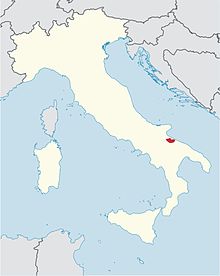
The Diocese of Ajaccio is a Latin Church ecclesiastical jurisdiction or diocese of the Catholic Church in France. The diocese comprises the whole of the island of Corsica.

The Diocese of Nardò-Gallipoli is a Latin diocese of the Catholic Church in southern Italy. It is a suffragan of the Archdiocese of Lecce.
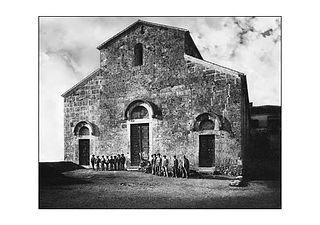
The Roman Catholic Diocese of Ferentino existed until 1986, when it was united into the new diocese of Frosinone-Veroli-Ferentino.

The Diocese of Frosinone-Veroli-Ferentino is a Latin Church ecclesiastical territory or diocese of the Catholic Church in Italy. It has existed since 1986. In that year, the Diocese of Ferentino was united into the Diocese of Veroli-Frosinone, which was the name of the historic Diocese of Veroli from 1956. It is immediately exempt to the Holy See and not part of an ecclesiastical province.

The Diocese of Nocera Umbra was a Catholic diocese in Umbria, Italy.
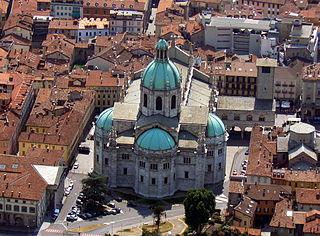
The Diocese of Como is a Latin Church ecclesiastical jurisdiction or diocese of the Catholic Church in northern Italy. It was established in the Fourth Century. It is a suffragan diocese in the ecclesiastical province of the metropolitan Archdiocese of Milan. The Bishop of Como's cathedra is in the Como Cathedral.

The Diocese of Tivoli is a Latin Church ecclesiastical territory or diocese of the Catholic Church in Latium, Italy, which has existed since the 2nd century. In 2002 territory was added to it from the Territorial Abbey of Subiaco. The diocese is immediately exempt to the Holy See.

The Diocese of Teramo-Atri is a Latin diocese of the Catholic Church in Abruzzo, central Italy. The current extent of the diocese was established in 1949, when the historic Diocese of Teramo was combined with the Diocese of Penne-Atri, in the Abruzzo. It is suffragan of the Archdiocese of Pescara-Penne.
The Catholic diocese of Sarsina was a Roman Catholic ecclesiastical territory in Emilia-Romagna, northern Italy, seated in Sarsina, in the province of Forlì, some 32 km south-southwest of Cesena. The diocese was founded in the 5th century, and was suffragan (subordinate) to the archbishop of Ravenna. The diocese existed until 1986, when it was united with the diocese of Cesena.

The Diocese of Conversano-Monopoli is a Latin diocese of the Catholic Church in Apulia. It has existed since 1986, when the diocese of Monopoli was united with the historic diocese of Conversano. The diocese is a suffragan of the Archdiocese of Bari-Bitonto.
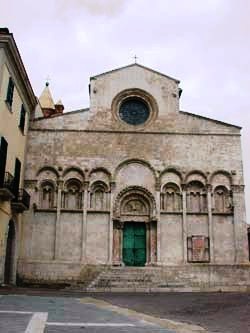
The Diocese of Termoli-Larino is a Latin Church diocese of the Catholic Church situated in the province of Campobasso, region of Molise. The commune of Termoli is an important regional seaport. The diocese has existed in its current configuration since 1986, when the diocese of Larino was suppressed and added to its territory. It is a suffragan of the archdiocese of Campobasso-Boiano.

The Diocese of San Severo is a Latin diocese of the Catholic Church in Apulia. It is a suffragan of the Archdiocese of Foggia-Bovino.
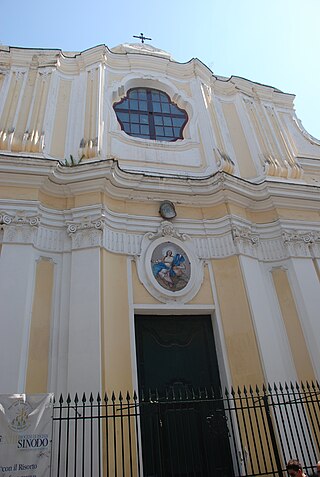
The Diocese of Ischia is a Latin diocese of the Catholic Church in Campania, southern Italy. It is a suffragan of the Archdiocese of Naples. The diocese comprises the entire island of Ischia, which contains seven communes divided into two circumscriptions. In 1743, the population was about 4,000. The city of Ischia constituted one single parish, with two religious houses of men and one of women. In 2018, the population of the town of Ischia was 20,118.
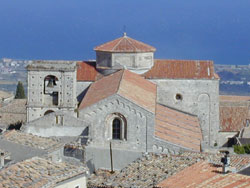
The Diocese of Locri-Gerace is a Latin diocese of the Catholic Church in Calabria. It is a suffragan of the Archdiocese of Reggio Calabria-Bova.
The Italian Catholic diocese of Lacedonia, a suffragan of the archdiocese of Benevento in Campania, existed until 1986 when incorporated into the reorganized Roman Catholic Diocese of Ariano Irpino-Lacedonia.
The Diocese of Acerno was a Roman Catholic diocese based in Acerno, a distance of 68 km (42 mi.) from Naples in southern Italy, with the bishop's seat in Acerno Cathedral. Created in the 11th century, in 1818, the diocese was granted in perpetual administratorship to the archbishops of Salerno. In the reorganization of ecclesiastical provinces in 1986, Acerno was suppressed, to create the Archdiocese of Salerno-Campagna-Acerno.

The Diocese of Bisceglie was a Roman Catholic diocese located in the town of Bisceglie on the Adriatic Sea in the province of Barletta-Andria-Trani, Apulia in southern Italy. It is five miles south of Trani.

The Diocese of Montalto was a Latin Church ecclesiastical territory or diocese of the Catholic Church located in the town of Montalto delle Marche in the Province of Ascoli Piceno in the Italian region Le Marche. The diocese was erected in 1586 by Pope Sixtus V, a native of the town. The diocese was suppressed in 1986, and its territory was assigned to a new entity, called the Diocese of San Benedetto del Tronto–Ripatransone–Montalto.
The Diocese of Venafro was a Roman Catholic diocese in Italy, located in Venafro, province of Isernia, region of Molise in the ecclesiastical province of Capua. In 1852, the dioceses of Isernia and Venafro were united under the governance of one and the same bishop, aeque personaliter. The diocese of Venafro was permanently suppressed on 30 September 1986.
The Diocese of Martirano was a Roman Catholic diocese located in the village and comune of Martirano in the province of Catanzaro in the Calabria region of Italy. It was suppressed in 1818 to the Diocese of Nicastro.

